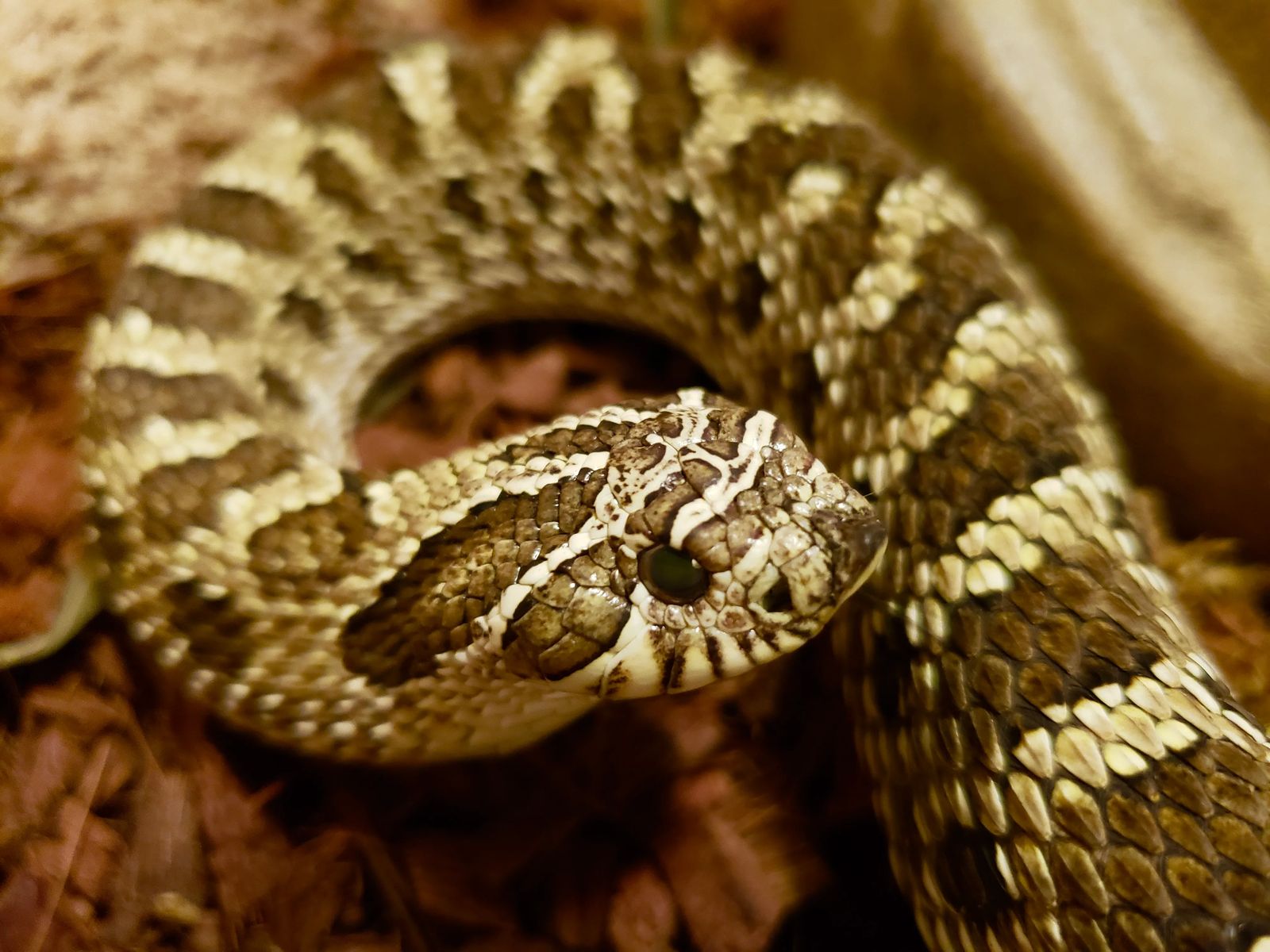
Western Hognose Snake
Heteredon nasicus
Western hognose snakes get their name because of their upturned nose that resembles that of a pig. Their upturned nose is what helps these snakes dig and burrow, by acting as a shovel to help them move through the terrain. They prefer to live in areas that are mostly dry and sandy and can be found from southern Canada to northern Mexico and can range from western Colorado to eastern Illinois. They are primarily a grayish brown or a light olive-green color with about forty spots that are a darker shade of this green color. Their heads are a lighter color with strong dark bands across the top and behind their eyes. Compared to other snakes, the scales are a bit more raised and rougher in texture, unlike a lot of terrestrial snakes that feel much smoother. These snakes are considered venomous, although their venom is only strong enough for their prey. When threatened, however, they will flip themselves on their backs, open their mouth, and play dead to avoid predation.
Our Current Residents
Wilbur, Male- Hatched in 2021 (estimated and celebrated)
Wilbur came to ZooMontana in 2021 from Yellowstone Valley Animal Shelter in Billings, Montana. Wilbur, like other hognose, can sometimes be a bit dramatic, but we love his large personality for such a small snake. Wilbur is in the indoor education building near the gift shop. If Wilbur is not visible, he may have been burrowing under his substrate (or bedding) and or under one of his hides.
You can get to know Wilbur better and meet him in person through our programs scheduled through the Education Department!
Taxonomy
- Kingdom: Animalia
- Phylum: Chordata
- Class: Reptilia
- Order: Squamata
- Family: Colubridae
- Genus: Heteredon
- Species: Heteredon nasicus
Animal Facts
Carnivores: mainly eat salamanders, rodents, lizards, other small snakes, and eggs (and eat infrequently)
Population Status (according to IUCN): currently listed as Of Concern
Montana Population Status (according to Montana Field Guide): currently listed as Species of Concern
Habitat: shortgrass prairie, dry rocky lands, and coastal island
Activity: crepuscular- mostly active during dusk and dawn
